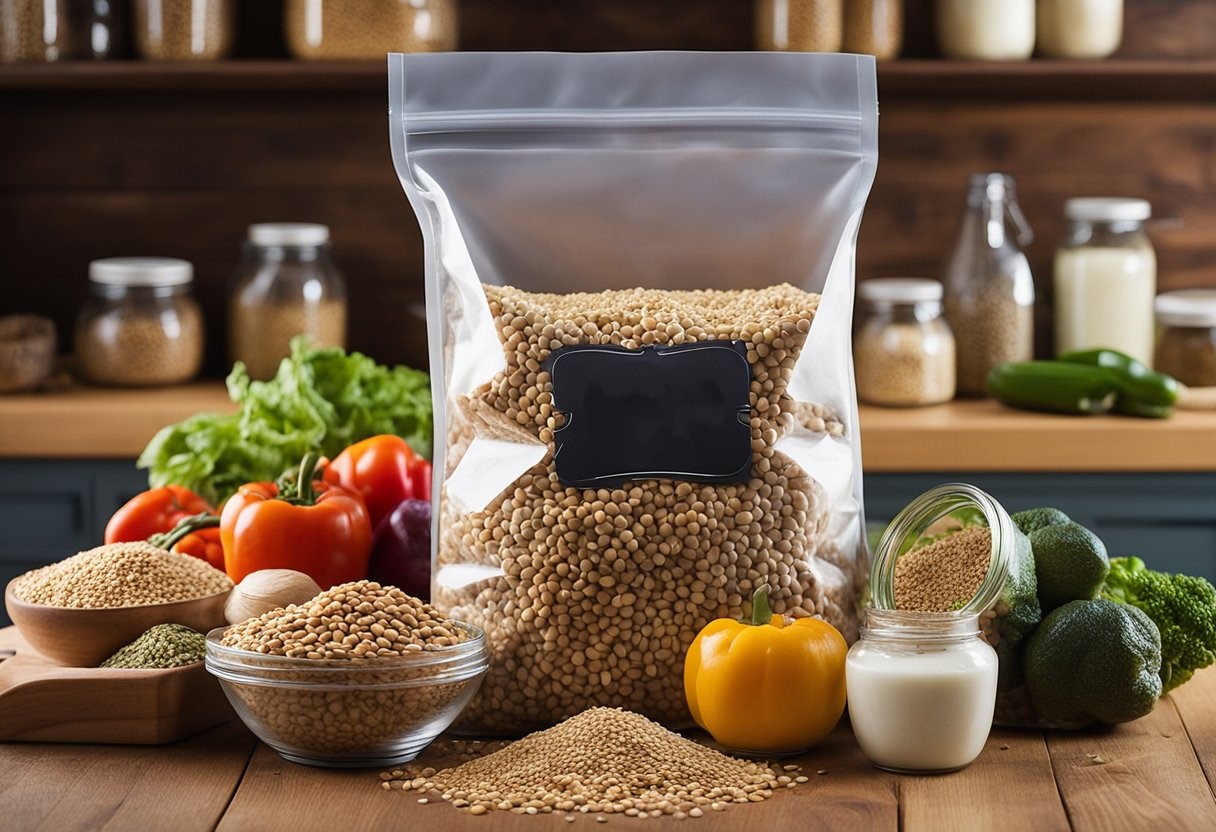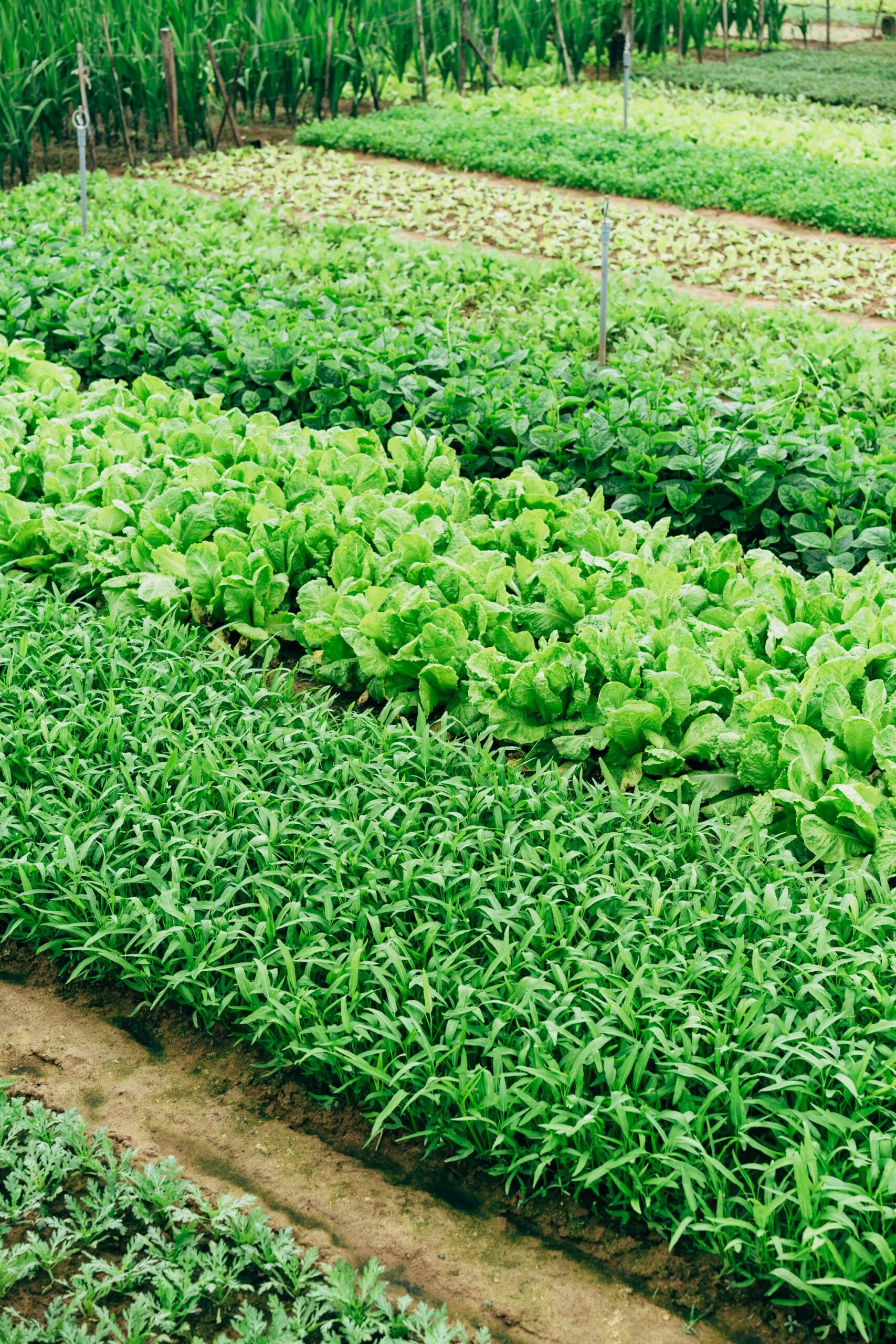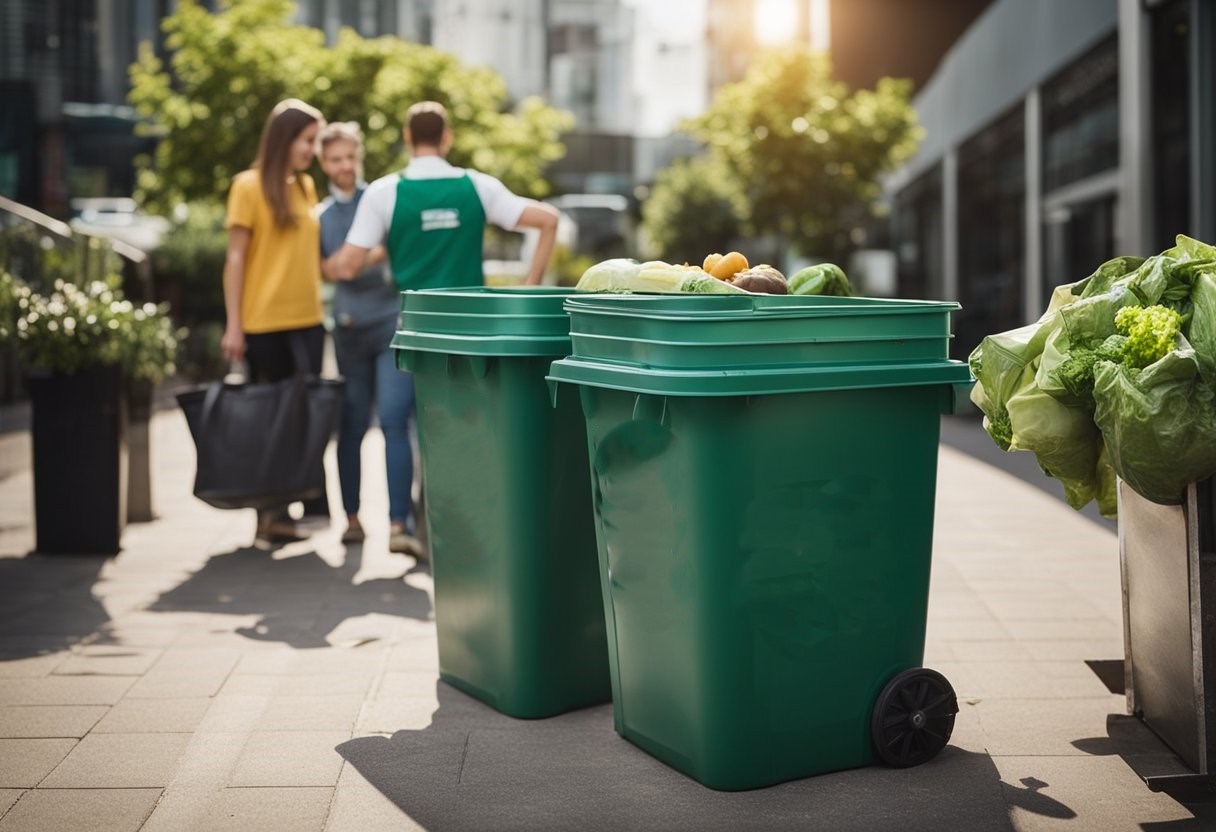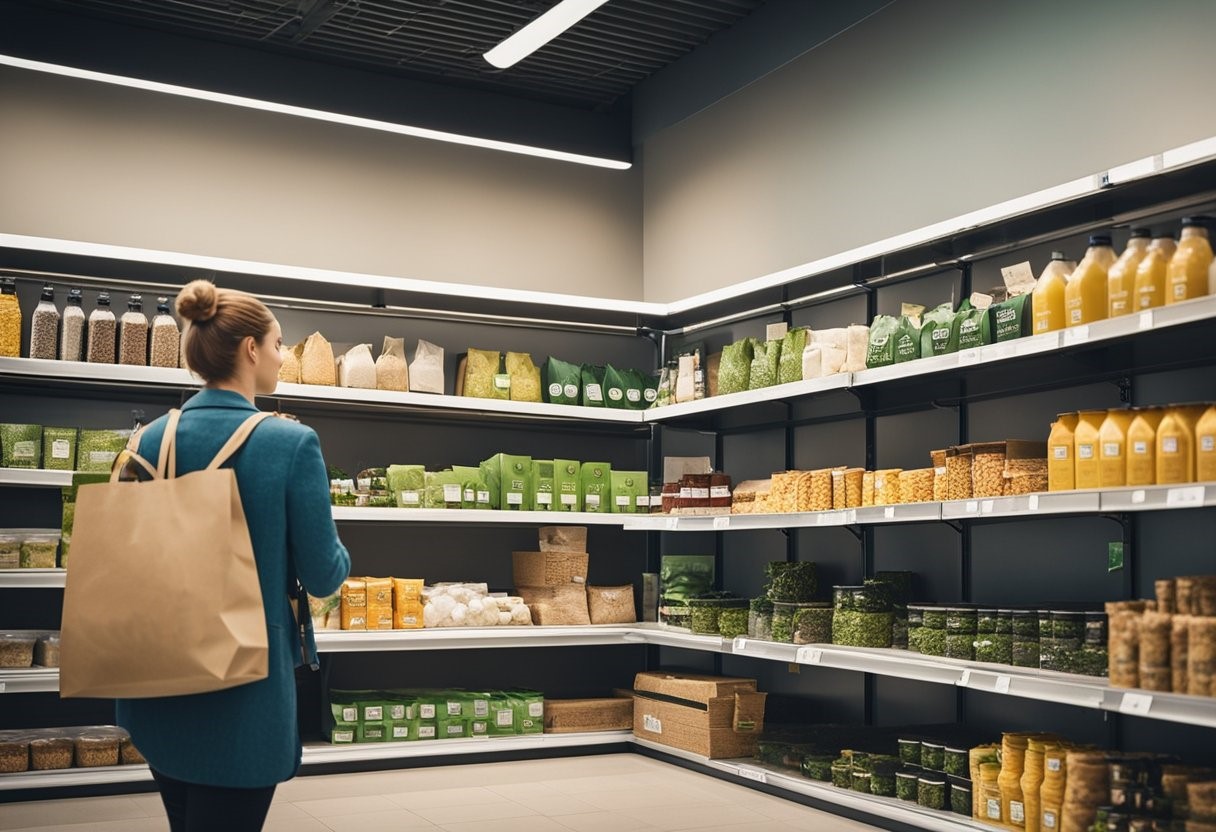Sustainable grocery shopping is an environmentally friendly approach to grocery shopping that aims to reduce waste and promote sustainable choices.
It involves planning, shopping locally and seasonally, choosing sustainable foods, using eco-friendly packaging and bags, bulk buying, and supporting fair trade and ethical practices.
By adopting sustainable grocery shopping practices, you can help reduce your impact on the environment and create a more sustainable future.

Understanding Sustainable Grocery Shopping: Sustainable grocery shopping involves making conscious choices that reduce your impact on the environment. This includes choosing foods that are locally and seasonally available and using eco-friendly packaging and bags.
Planning for Sustainability: Planning is an essential part of sustainable grocery shopping. By planning your meals and grocery shopping trips, you can reduce food waste and ensure that you are making sustainable choices. This involves creating a grocery list, shopping for foods that are in season and locally available, and choosing foods that are packaged in eco-friendly materials. By planning ahead, you can reduce your impact on the environment and create a more sustainable future.
Key Takeaways
- Sustainable grocery shopping involves making conscious choices that reduce your impact on the environment.
- Planning is an essential part of sustainable grocery shopping.
- By adopting sustainable grocery shopping practices, you can help reduce your impact on the environment and create a more sustainable future.
Table of Contents
Table of Contents
Understanding Sustainable Grocery Shopping
Definition and Importance
Sustainable grocery shopping is a practice that involves making conscious decisions to purchase food products that have a minimal environmental impact.
It involves considering the origin of the food, the packaging, and the transportation methods used to bring the food to the store.
Sustainable grocery shopping is essential for reducing the environmental impact of food production and distribution. The food industry is a significant contributor to greenhouse gas emissions, and unsustainable practices can lead to soil degradation, deforestation, and water pollution.
Environmental Impact of Grocery Shopping
Grocery shopping has a significant impact on the environment. The production, transportation, and packaging of food products contribute to greenhouse gas emissions and waste. Here are some of the environmental impacts of grocery shopping:
- Greenhouse gas emissions: The production and transportation of food products contribute to greenhouse gas emissions, which can lead to climate change.
- Carbon footprint: The carbon footprint of food products includes the emissions associated with their production, transportation, and packaging.
- Packaging waste: The packaging of food products contributes to waste in landfills. By choosing products with minimal packaging, you can reduce the amount of waste that goes into landfills.
- Water usage: The production of food products requires water, and unsustainable practices can lead to water pollution and scarcity.
Sustainable grocery shopping is essential for reducing the environmental impact of food production and distribution. By choosing sustainable options, you can reduce your carbon footprint, minimize waste, and help to protect the environment.
Planning for Sustainability
When it comes to sustainable grocery shopping, planning is key. By planning ahead, you can reduce food waste, save money, and ensure that you are getting the nutrients you need. Here are some tips for creating a sustainable shopping plan.
Creating a Sustainable Shopping List
Before heading to the grocery store, take some time to create a shopping list. This will help you avoid buying items that you don’t need, which can lead to food waste. When creating your list, consider the following:
- Buy in bulk: Buying in bulk can help reduce packaging waste and save money in the long run. Consider purchasing items like grains, nuts, and dried fruit in bulk.
- Choose seasonal produce: Seasonal produce is often more affordable and has a lower carbon footprint than out-of-season produce that has been shipped from far away.
- Look for sustainable options: When choosing products, look for items that are sustainably sourced and produced. This can include items like fair trade coffee, organic produce, and products made from recycled materials.
Meal Planning and Reducing Food Waste
Meal planning is another important aspect of sustainable grocery shopping. By planning your meals ahead of time, you can reduce food waste and ensure that you are getting the nutrients you need. Here are some tips for meal planning:
- Plan your meals around what you already have: Before creating your meal plan, take inventory of what you already have in your pantry and fridge. This can help you avoid buying unnecessary items and reduce food waste.
- Choose recipes that use similar ingredients: By choosing recipes that use similar ingredients, you can reduce the amount of food that goes to waste.
- Use leftovers: Instead of throwing out leftovers, use them to create new meals. For example, leftover chicken can be used to make a salad or sandwich.
Reducing food waste is an important part of sustainable grocery shopping. By planning your meals ahead of time and creating a shopping list, you can reduce the amount of food that goes to waste and save money in the process.
Shopping Locally and Seasonally
When it comes to sustainable grocery shopping, one of the key things to keep in mind is shopping locally and seasonally. This is an important aspect of reducing your carbon footprint and supporting local farmers.
Benefits of Local Produce
By shopping locally, you are supporting your local economy and reducing the carbon emissions associated with transporting food long distances. Local produce is also often fresher and more flavorful, as it is picked at the peak of ripeness and doesn’t have to travel far to get to your plate. Additionally, buying local produce helps to preserve farmland and protect local ecosystems.
Understanding Seasonal Produce
Another important aspect of sustainable grocery shopping is understanding seasonal produce. This means buying fruits and vegetables that are in season in your area. Seasonal produce is often cheaper and more readily available, as it doesn’t have to be transported long distances. It is also more sustainable, as it doesn’t require the use of energy-intensive methods to grow out of season produce.
To get started with shopping locally and seasonally, try visiting your local farmers’ market or joining a Community Supported Agriculture (CSA) program. These options allow you to connect directly with local farmers and get access to fresh, seasonal produce. You can also check out local grocery stores and co-ops that prioritize stocking local and seasonal produce.
Remember, shopping locally and seasonally is just one aspect of sustainable grocery shopping, but it is an important one.
Choosing Sustainable Foods

When it comes to sustainable grocery shopping, choosing the right foods can make a big difference. Here are some tips to help you make the most sustainable choices:
Organic and Regenerative Farming
Organic and regenerative farming practices prioritize soil health and biodiversity, making them a more sustainable choice. Look for USDA organic labels on produce and meat products. This ensures that the food was grown or raised without synthetic pesticides, fertilizers, or genetically modified organisms (GMOs).
Additionally, regenerative farming practices go beyond organic by focusing on rebuilding soil health and sequestering carbon. Look for meat products that are labeled as grass-fed, pasture-raised, or regeneratively-raised.
Plant-Based and Sustainable Seafood Options
Choosing plant-based options can be a great way to reduce your carbon footprint. Look for plant-based proteins like tofu, tempeh, and legumes. When it comes to seafood, look for sustainably-sourced options that are lower on the food chain. This includes options like sardines, mussels, and clams. Avoid seafood that is overfished or caught using destructive methods like bottom trawling.
In addition to these tips, there are a few other things to keep in mind when choosing sustainable foods. First, try to choose foods that are in season and grown locally. This helps to reduce the carbon emissions associated with transportation. Second, try to choose foods with minimal packaging. This can help to reduce waste and prevent plastic from ending up in landfills or oceans.
Eco-Friendly Packaging and Bags

When it comes to grocery shopping, packaging and bags are a major source of waste. But with a few simple changes, you can significantly reduce your environmental impact. Here are some tips for eco-friendly packaging and bags.
Avoiding Single-Use Plastics
Single-use plastics are a major contributor to plastic pollution. They are used once and then thrown away, often ending up in landfills or the ocean. To reduce your use of single-use plastics, look for alternatives such as reusable bags, produce bags, and containers.
When shopping for produce, opt for loose items rather than pre-packaged ones. Bring your own reusable produce bags or use paper bags provided by the store. You can also bring your own containers for items such as meat, cheese, and deli products.
Reusable and Compostable Packaging Options
Reusable bags are a great alternative to single-use plastic bags. Look for sturdy bags made from materials such as canvas, hemp, or recycled plastic. Keep a few reusable bags in your car, so you always have them on hand.
Compostable packaging is another eco-friendly option. These materials can be composted at home or in a commercial composting facility.
When shopping, look for products with minimal packaging or packaging that is recyclable. Avoid products with excessive plastic packaging or packaging that cannot be recycled.
Bulk Buying and Waste Reduction

When it comes to sustainable grocery shopping, buying in bulk is an excellent way to reduce waste. Not only does it minimize the amount of packaging waste generated, but it also helps save money in the long run. Here are some benefits of buying in bulk and tips for minimizing packaging waste.
Benefits of Buying in Bulk
Buying in bulk can reduce the amount of packaging waste generated from food and household products. Instead of buying products with excessive packaging, you can bring your own reusable containers to fill up with the desired amount of goods. This reduces the amount of plastic, paper, and cardboard waste that ends up in landfills.
Moreover, buying in bulk often means that you can get a better price per unit, which can help save money in the long run. It also means that you can buy only the amount you need, which can help reduce food waste.
Minimizing Packaging Waste
When buying in bulk, it is important to bring your own reusable containers to avoid using single-use plastic bags or containers. You can use jars, cloth bags, or any other reusable containers that you have at home.
Additionally, it is important to check the bulk options available at your local grocery store. Many stores offer bulk goods such as grains, nuts, seeds, and dried fruits. Some stores also offer bulk liquid items such as olive oil, vinegar, and honey.
Supporting Fair Trade and Ethical Practices

When it comes to sustainable grocery shopping, it’s important to consider the impact of your purchases on the environment and the people involved in the production of your food. Supporting fair trade and ethical practices is one way to ensure that your food is produced in a way that is sustainable and socially responsible.
Fair Trade Principles
Fair trade is a movement that aims to promote sustainable and equitable trading relationships between producers in developing countries and consumers in developed countries. Fair trade principles include paying fair prices to producers, ensuring safe and healthy working conditions, and promoting sustainable production methods.
When shopping for fair trade products, look for certifications such as Fairtrade or Fair Trade Certified labels. These labels indicate that the product meets certain standards for fair trade practices. Some common fair trade products include coffee, chocolate, tea, and spices.
Ethical Considerations in Food Systems
In addition to supporting fair trade practices, it’s important to consider the ethical implications of our food systems. This includes issues such as animal welfare, environmental sustainability, and workers’ rights.
When shopping for groceries, look for products that are produced using sustainable and ethical methods. This might include products that are organic, locally sourced, or produced using regenerative agriculture practices.
You can also look for certifications such as USDA Organic or Certified Humane to ensure that the products you are buying meet certain ethical standards.
By supporting fair trade and ethical practices in your grocery shopping, you can help create a more sustainable and socially responsible food system.
Sustainability Beyond the Grocery Store

When it comes to sustainable grocery shopping, it’s not just about what you buy at the store. There are many other factors to consider, including transportation and emissions, as well as the long-term sustainability of our planet for future generations.
Transportation and Emissions
One of the biggest contributors to greenhouse gas emissions is transportation. When you drive to the grocery store, you’re adding to the carbon footprint of your grocery shopping trip. To reduce your impact, consider walking, biking, or taking public transportation to the store.
In addition to transportation, consider the emissions associated with the food you buy. Look for locally sourced produce and products to reduce the emissions associated with transporting food long distances. You can also look for products with eco-friendly packaging, such as biodegradable or compostable materials.
Long-Term Sustainability and Future Generations
Sustainable grocery shopping is not just about reducing waste and emissions in the present, but also ensuring a livable planet for future generations. Consider the impact of your choices on the environment and the well-being of future generations.
One way to do this is to support companies and brands that prioritize sustainability. Look for certifications such as Fair Trade, Rainforest Alliance, and USDA Organic to ensure that your purchases are environmentally and socially responsible.
Another way to promote long-term sustainability is to reduce waste. Bring your own reusable bags, containers, and produce bags to the store to reduce the amount of single-use plastic and paper waste you generate. You can also buy in bulk to reduce packaging waste and save money in the long run.
Frequently Asked Questions

How can I make my grocery shopping more eco-friendly?
Making your grocery shopping eco-friendly is easier than you think. Start by bringing your own reusable bags, containers, and produce bags. This will reduce the amount of plastic and paper waste generated from grocery shopping. When shopping, try to buy products with minimal packaging. Look for products in bulk and bring your own containers to fill up. Opt for products made from sustainable materials like bamboo, glass, or stainless steel. Choose products that are locally sourced and in season. This reduces the carbon footprint generated from transportation and storage. Finally, try to reduce food waste by planning your meals and only buying what you need.
What are some examples of sustainable grocery shopping practices?
Sustainable grocery shopping practices include buying products in bulk, choosing products made from sustainable materials, buying locally sourced and in-season products, and reducing food waste. It also includes using reusable bags, containers, and produce bags, and avoiding products with excessive packaging.
Where can I find a zero waste grocery store in my area?
Zero waste grocery stores are becoming more common. Check online or ask around to see if there is one in your area. If not, try to find a store that offers bulk shopping options and bring your own containers to fill up.
What should I include on a sustainable grocery shopping list?
When making a sustainable grocery shopping list, include locally sourced and in-season fruits and vegetables, bulk grains, nuts, and seeds, and products made from sustainable materials like bamboo, glass, or stainless steel. Try to avoid products with excessive packaging and choose products with minimal packaging. Finally, plan your meals and only buy what you need to reduce food waste.
Which grocery stores are known for their sustainability efforts?
Many grocery stores are making sustainability efforts. Look for stores that offer bulk shopping options, locally sourced and in-season products, and products made from sustainable materials. Some examples include Whole Foods, Trader Joe’s, and Sprouts Farmers Market.
How can I shop for groceries ethically without creating waste?
To shop for groceries ethically without creating waste, bring your own reusable bags, containers, and produce bags. Choose products made from sustainable materials and buy locally sourced and in-season products. Avoid products with excessive packaging and plan your meals to reduce food waste. Finally, try to support companies that prioritize sustainability and ethical practices.

I’m Chris, a passionate advocate for sustainability, sharing my journey and tips from our vibrant family farm. With a background rooted in zero-waste living and a heart committed to eco-friendly practices, I aim to empower others through my blog. Each post is a blend of personal experiences or a question I have once pondered, and practical advice for those looking to make sustainable choices in their daily lives. Join me in making every step a greener one, as we explore the joys and challenges of living sustainably together.